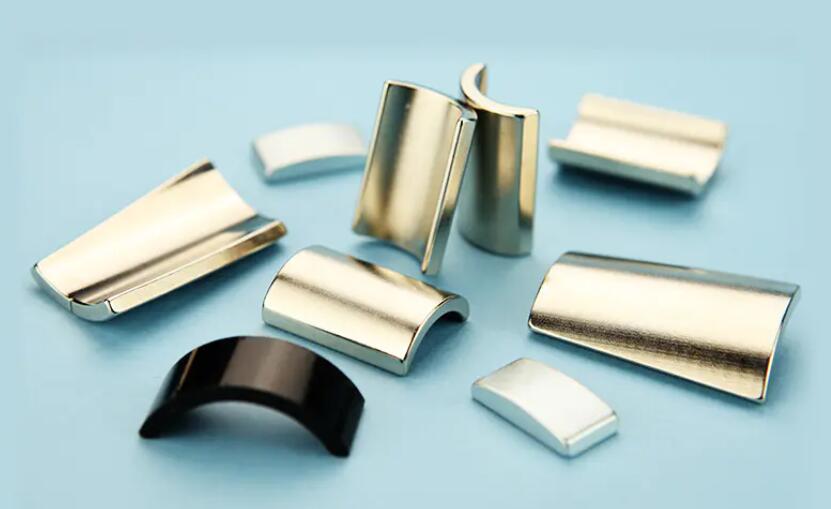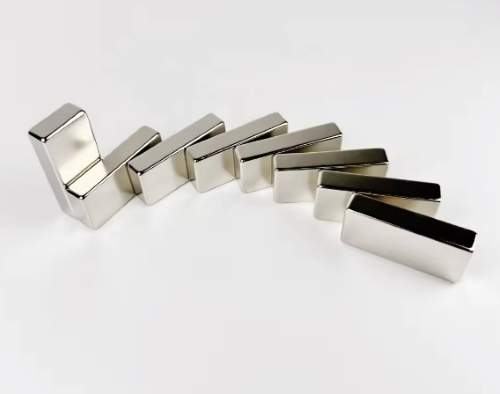Surface Treatment of NdFeB Magnets - Electrophoresis
There are many methods for the surface treatment of NdFeB magnets, such as electroplating, phosphating, and electrophoresis. Among them, the electrophoresis is one of the anti-corrosion surface treatment technologies widely used in sintered NdFeB and bonded NdFeB permanent magnets.
 Surface Treatment of NdFeB Magnets
Surface Treatment of NdFeB Magnets
Before going any further, let's figure out what's electrophoresis first.
What is electrophoresis?
Electrophoresis is to immerse the parts in a water-soluble electrophoresis bath, insert the anode and cathode electrodes into the bath at the same time, and apply a direct current between the two electrodes to produce an electrochemical reaction, so that the water-soluble paint is evenly deposited on the parts, forming an anti-corrosion coating composed of resin particles, or a high-molecular polymer anti-corrosion coating.
Advantages of Electrophoretic Coating
Electrophoretic coating not only has good bonding force with the porous magnet surface but also has corrosion resistance such as salt spray, acid, and alkali resistance. Compared with spray coating, it has the following advantages:
- High coating utilization rate. If spray coating is used, a large amount of spray paint will be scattered during the spraying process, and about half of the paint will be lost. However, the use of ultrafiltration technology for electrophoretic coating can make the paint utilization rate reach 90%-95%.
- Electrophoretic paint is a water-soluble paint, without organic solvents, saving energy and raw materials, and reducing the pollution to the environment.
- High production efficiency. After pretreatment, the bonded magnet parts can be electrophoresed directly without drying, shortening the coating time.
- Good coating effect for complex parts. Electrophoretic coating relies on the distribution of the electric field in the electrophoresis bath for electrodeposition. Because the deposited coating film is insulating, a uniform coating can be formed on all parts of the part.
- The coating quality is good, the corrosion resistance is strong, and the bonding force is good.
Disadvantages of Electrophoretic Coating
- The one-time investment cost is high, the maintenance and management of the electrophoresis bath are complicated, and various process parameters need to be carefully controlled.
- The electrophoretic coating cannot cover up the defects of the magnet surface, such as cavities, scratches, dents, etc. 3. The electrophoretic coating requires more manual labor.
Classification of Electrophoretic Coating
The electrophoretic coating has two types: anode coating and cathode coating. Anodic electrophoresis uses a sintered NdFeB magnet as the anode. In this way, the matrix metal and surface treatment film (such as phosphating film) are precipitated and dissolved at the same time during the electrophoresis process, which reduces the corrosion resistance of the electrophoretically deposited film. Therefore, cathodic electrophoresis is used in most cases, that is, the sintered neodymium magnet is used as the cathode, and cationic electrophoretic paint is used. The cathodic electrophoresis coating uses organic acid as a neutralizer, which has low toxicity. The mechanical strength of the wet paint film itself and the bonding force with the workpiece are higher than that of the anode electrophoretic coating. However, the cost of the cathodic electrophoresis coating is high, and the electrophoresis bath is acidic, which has a corrosive effect on the equipment. The cathodic electrophoresis tank should be made of corrosion-resistant materials, such as stainless steel or acid-resistant plastics.
Process Flow of Sintered NdFeB Electrophoretic Coating
The process flow of the electrophoretic coating is mainly divided into three parts: surface pretreatment, electrophoresis, and drying and curing. A smooth and clean surface is the basis of high-quality electrophoretic coating, and the purpose of surface pretreatment is to create good surface conditions. The electrophoretic coating process is a complex chemical change process. As the coating is continuously deposited on the surface of the magnet, the composition of the electrophoresis tank is constantly changing. The solid components, the pH value of the electrophoresis tank, temperature, electrophoresis voltage, electrode spacing, etc.
Conclusion
Thank you for reading our article and we hope it can help you to have a better understanding of electrophoresis - the surface treatment of NdFeB Magnets. If you want to know more about neodymium magnets, we would like to advise you to visit Stanford Magnets for more information. Stanford Magnets is a leading magnet supplier across the world, that has been involved in R&D, manufacturing, and sales of magnets since the 1990s. It provides customers with high-quality permanent magnets like neodymium magnets, SmCo magnets, AlNiCo magnets, and ferrite magnets (ceramic magnets) at a very competitive price.















